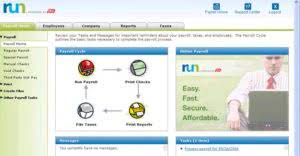Liability account definition

The third party to which the obligation must be paid (such as a supplier or lender) is known as the creditor. The classification is critical to the company’s management of its financial obligations. Liabilities can help companies organize successful business operations and accelerate value creation.
- Liabilities are unsettled obligations to third parties that represent a future cash outflow, or more specifically, the external financing used by a company to fund the purchase and maintenance of assets.
- Accounts Payable – Many companies purchase inventory on credit from vendors or supplies.
- A liability account is a category within the general ledger that shows the debt, obligations, and other liabilities a company has.
- Trump had previously argued that securing a bond for the entire amount would have required he provide $1 billion in cash reserves.
- Contingent liabilities are potential future obligations that depend on the occurrence of a specific event or condition.
- Retained earnings are the net earnings a company either reinvests in the business or uses to pay off debt.
- This enables decision-makers to prioritize their payments and allocate resources accordingly.
It started with reports from the Los Angeles Times and ESPN that a federal investigation was targeting a bookmaking operation allegedly run by Mathew Bowyer, who lives in Orange County, https://www.bookstime.com/articles/how-to-write-a-receipt Calif. When contacted by NPR, the local U.S. attorney’s office declined to comment on those reports. The Dodgers have fired Mizuhara, a team representative told NPR on Thursday.
Examples of liabilities
For example, banks want to know before extending credit whether a company is collecting—or getting paid—for its accounts receivable in a timely manner. On the other hand, on-time payment of the company’s payables is important as well. Both the current and quick ratios help with the analysis of a company’s financial solvency and management of its current liabilities.
Liabilities are categorized as current or non-current depending on their temporality. They can include a future service owed to others (short- or long-term borrowing from banks, individuals, or other entities) or a previous transaction that has created an unsettled obligation. The most common liabilities are usually the largest like accounts payable and bonds payable. Most companies will have these two line items on their balance sheet, as they are part of ongoing current and long-term operations. Recorded on the right side of the balance sheet, liabilities include loans, accounts payable, mortgages, deferred revenues, bonds, warranties, and accrued expenses. Assets and liabilities are two fundamental components of a company’s financial statements.
Resources for Your Growing Business
As opposed to an income statement which reports financial information over a period of time, a balance sheet is used to determine the health of a company on a specific day. The financial statement only captures the financial position of a company on a specific day. Looking at a single balance sheet by itself may make it difficult to extract whether a company is performing well. For example, imagine a liabilities in accounting company reports $1,000,000 of cash on hand at the end of the month. Without context, a comparative point, knowledge of its previous cash balance, and an understanding of industry operating demands, knowing how much cash on hand a company has yields limited value. In order to issue a company’s financial statements on a timely basis, it may require using an estimated amount for the accrued expenses.
When a business borrows money, the obligations to repay the principal amount, as well as any interest accrued, are recorded on the balance sheet as liabilities. These may be short-term or long-term, depending on the terms of the loan or bond. Proper understanding and management of liabilities in accounting are essential for a company’s financial stability and growth. By keeping track of these obligations and ensuring they are met in a timely manner, a company can successfully avoid financial crises and maintain a healthy financial position. Because most accounting these days is handled by software that automatically generates financial statements, rather than pen and paper, calculating your business’ liabilities is fairly straightforward. As long as you haven’t made any mistakes in your bookkeeping, your liabilities should all be waiting for you on your balance sheet.

